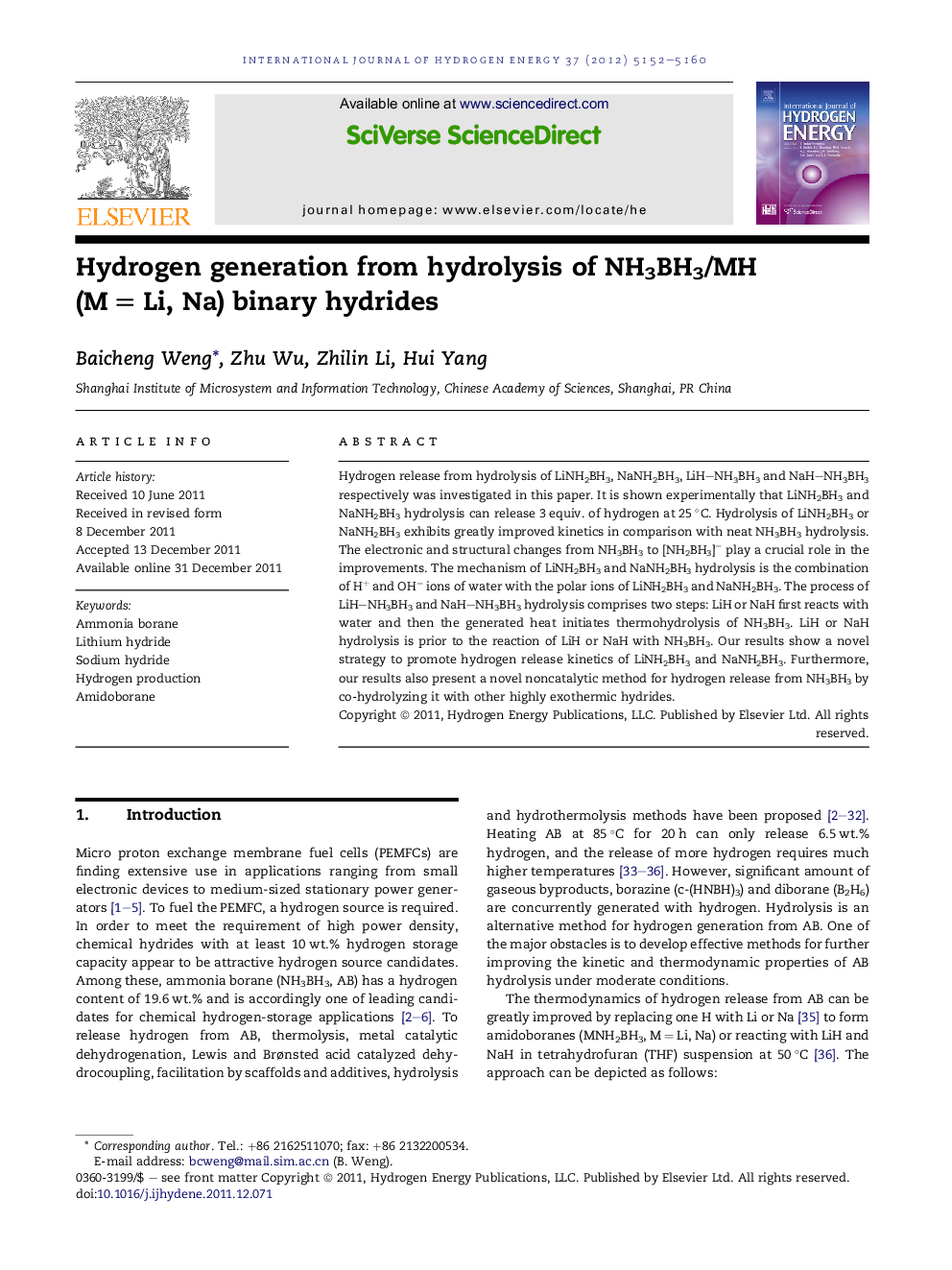| Article ID | Journal | Published Year | Pages | File Type |
|---|---|---|---|---|
| 1271535 | International Journal of Hydrogen Energy | 2012 | 9 Pages |
Hydrogen release from hydrolysis of LiNH2BH3, NaNH2BH3, LiH–NH3BH3 and NaH–NH3BH3 respectively was investigated in this paper. It is shown experimentally that LiNH2BH3 and NaNH2BH3 hydrolysis can release 3 equiv. of hydrogen at 25 °C. Hydrolysis of LiNH2BH3 or NaNH2BH3 exhibits greatly improved kinetics in comparison with neat NH3BH3 hydrolysis. The electronic and structural changes from NH3BH3 to [NH2BH3]− play a crucial role in the improvements. The mechanism of LiNH2BH3 and NaNH2BH3 hydrolysis is the combination of H+ and OH− ions of water with the polar ions of LiNH2BH3 and NaNH2BH3. The process of LiH–NH3BH3 and NaH–NH3BH3 hydrolysis comprises two steps: LiH or NaH first reacts with water and then the generated heat initiates thermohydrolysis of NH3BH3. LiH or NaH hydrolysis is prior to the reaction of LiH or NaH with NH3BH3. Our results show a novel strategy to promote hydrogen release kinetics of LiNH2BH3 and NaNH2BH3. Furthermore, our results also present a novel noncatalytic method for hydrogen release from NH3BH3 by co-hydrolyzing it with other highly exothermic hydrides.
► We examine hydrolytic behaviors of LiNH2BH3, NaNH2BH3, LiH–NH3BH3 and NaH-NH3BH3. ► Hydrolytic kinetics of LiNH2BH3 and NaNH2BH3 are faster than their thermolysis. ► LiH or NaH preferentially react with water than NH3BH3 during hydrolysis. ► Effect of LiH or NaH on NH3BH3 hydrolysis is mainly the thermal effect.
